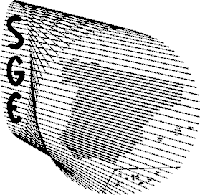Volcanic Dome Collapse Destroys Montserrat Buildings
Photo: Montserrat Volcano Observatory
Some of the strongest activity in nearly four years at Montserrat’s Soufriere Hills volcano sent ash soaring high above the Caribbean as clouds of super-heated gas and debris cascaded down the mountain’s slopes.
Ash from the blast, which was due to a massive dome collapse, disrupted air traffic across parts of the region.
The village of Harris sustained extensive damage from the pyroclastic flows, with many buildings there razed to their foundations, according to the Montserrat Volcano Observatory (MVO).
Ash that reached altitudes of nearly 6 miles blew across the southeast Caribbean, with extensive falls of the volcanic debris reported in Guadeloupe. The nearby islands of Dominica, Martinique, St. Lucia and Barbados received a light dusting.
Firefighters on Guadeloupe used fire engines to clear the thick layer of ash that had accumulated on the French archipelago’s airport runways. Several travelers were stranded until the ash was cleared.
Little ash was reported on Montserrat, but residents did report a fine dust in the air that was causing respiratory problems for some people.
MVO director Paul Cole said it is possible that Soufriere Hills will calm down as the dome is slowly rebuilt over time.
The volcano roared to life in July 1995 for the first time in recorded history. It spewed huge plumes of ash and molten lava into the sky for several weeks, raining down on the British overseas territory.
The island’s capital of Plymouth was subsequently destroyed and buried beneath a thick blanket of ash.
Two-thirds of the island’s population were forced to move abroad, mainly to Britain or nearby islands, due to the disaster.











